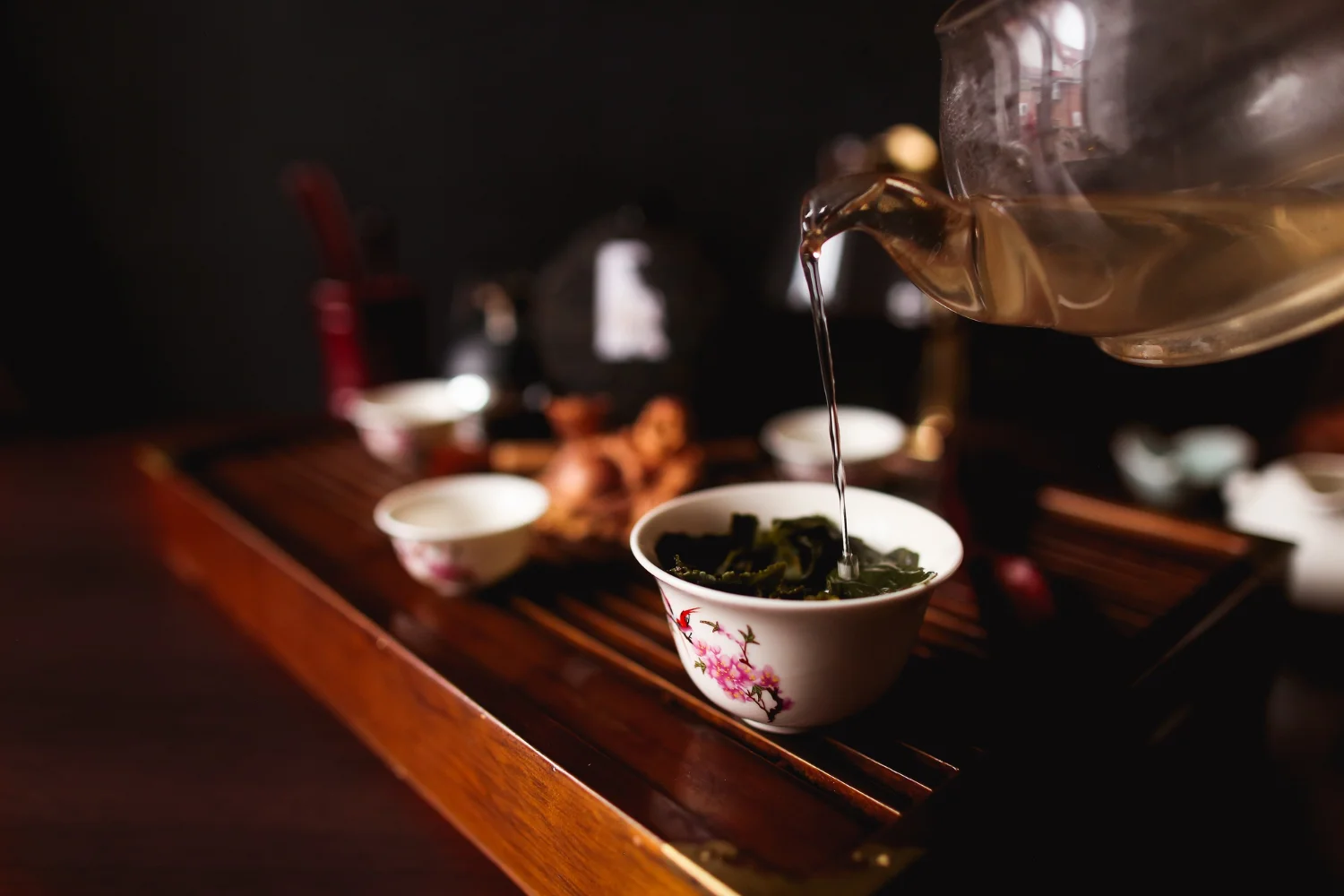Introduction: The Aroma of Tradition
Picture yourself walking into a bustling Chinese restaurant after a long day. The warm, comforting fragrance of herbs and spices fills the air, and your senses are immediately overwhelmed by the atmosphere. As you sit down, the waiter brings you a small pot of steaming tea, poured into a delicate porcelain cup. You take the first sip, and instantly, a sense of calm washes over you. But what exactly is this tea that you’re drinking? It’s not just any tea; it’s a carefully chosen brew that has been part of Chinese culture for centuries. In this article, we’ll explore what is the tea used in chinese restaurants how it enhances the dining experience, and the cultural significance behind this centuries-old tradition.
What Is the Tea Used in Chinese Restaurants?
When you visit a Chinese restaurant, the tea you’re served is typically a type of Chinese green tea or oolong tea. While you may be familiar with a wide range of teas, the ones served in Chinese restaurants are specifically chosen for their refreshing qualities and ability to complement the flavors of Chinese cuisine.
Types of Tea Commonly Served in Chinese Restaurants
Chinese restaurants often serve Jasmine tea, Oolong tea, and Pu-erh tea, each offering a unique experience.
Jasmine Tea: A Fragrant Delight
Jasmine tea is one of the most common types of tea served in Chinese restaurants. The tea leaves are scented with the sweet aroma of jasmine flowers, which gives the tea its distinctive fragrance. The delicate, floral flavor of Jasmine tea makes it a perfect accompaniment to a variety of Chinese dishes. The lightness of this tea helps cleanse the palate, especially after a rich and flavorful meal.
Oolong Tea: The Perfect Balance
Oolong tea is another staple in Chinese dining establishments. This semi-fermented tea strikes a perfect balance between green tea and black tea, offering a more robust flavor profile. The taste of Oolong can vary depending on its oxidation level, but it is often praised for its smooth, floral, and slightly sweet notes. The mild bitterness and subtle sweetness of Oolong tea work harmoniously with both savory and spicy Chinese dishes, making it a go-to choice in many restaurants.
Pu-erh Tea: The Bold, Earthy Option
Pu-erh tea is an aged tea that has a distinctive earthy flavor. It is often served after heavy meals, as it is believed to aid digestion. With its deep, complex taste, Pu-erh tea stands out for its ability to cut through the richness of fatty dishes. It’s a perfect match for savory Chinese meals like dim sum or roasted meats. This tea is also known for its health benefits, including improving digestion and boosting metabolism.
Why Is Tea Served in Chinese Restaurants?
Tea has a profound role in Chinese culture, and its presence in Chinese restaurants is no accident. In China, tea is more than just a beverage; it’s a symbol of hospitality, tradition, and balance. When you ask, What is the tea used in Chinese restaurants?, it’s essential to understand that it’s an integral part of the dining experience. The tea served is meant to refresh, cleanse the palate, and enhance the overall meal.
A Symbol of Hospitality
In Chinese culture, offering tea is a gesture of respect and warmth. When you visit a restaurant, the tea isn’t just about quenching thirst, it’s a way to welcome you and make you feel at home. By serving tea, the restaurant honors centuries-old traditions of hospitality that date back to ancient Chinese dynasties.
Enhancing the Dining Experience
Tea is also chosen for its ability to complement the flavors of the dishes being served. Chinese food is known for its complex flavor profiles, from savory and salty to spicy and sweet. The tea served in Chinese restaurants helps to balance these flavors, cleanse the palate between bites, and create a harmonious dining experience. For instance, after enjoying a rich dish like Peking duck, a sip of Oolong tea can refresh the palate, allowing you to appreciate the next course fully.
Health Benefits of Tea in Chinese Restaurants
Besides its cultural and gastronomical significance, the tea served in Chinese restaurants is also valued for its health benefits. Various types of Chinese tea are believed to have properties that promote digestion, improve mental clarity, and support overall well-being.
Aid in Digestion
One of the primary reasons Chinese tea is offered with meals is its ability to assist in digestion. Oolong and Pu-erh teas, in particular, are believed to stimulate the digestive system and help break down fats. This is especially beneficial after a heavy meal, as it aids in the digestion of oils and rich foods.
Boosting Metabolism and Detoxification
Many Chinese teas, such as green tea and Pu-erh, are rich in antioxidants that are said to help detoxify the body and promote a healthy metabolism. By drinking tea throughout the meal, diners may experience a boost in energy and overall well-being. This aspect is highly valued in traditional Chinese medicine.
Calming Effects
Chinese tea, particularly Jasmine tea, is known for its calming properties. The mild, floral notes of Jasmine tea have a soothing effect, helping to reduce stress and anxiety. This is in line with the philosophy of balance and tranquility that underpins much of Chinese culture.
How to Enjoy Tea in Chinese Restaurants
Enjoying tea in Chinese restaurants is not just about drinking; it’s an experience in itself. To get the most out of your tea-drinking experience, here are a few tips:
- Sip Slowly: Tea is meant to be savored, not gulped. Take small sips to appreciate the flavor and aroma fully.
- Pair Tea with Food: Don’t just drink tea between bites, allow the flavors of the tea to complement the food you’re eating. For instance, a pot of Jasmine tea goes wonderfully with dim sum, while Oolong pairs well with roasted meats.
- Tea Refills: In Chinese restaurants, tea is often refilled throughout the meal. It’s customary to pour the tea for others first, and refills are a way of showing hospitality and care.
Conclusion: A Sip of Culture and Tradition
In conclusion, the tea served in Chinese restaurants is much more than a simple drink. It’s a representation of Chinese hospitality, a tool for enhancing the dining experience, and a vessel for good health. Whether you’re enjoying a fragrant Jasmine tea, a bold Pu-erh, or a balanced Oolong, you’re partaking in a tradition that has lasted for centuries. So, next time you visit a Chinese restaurant, take a moment to savor the tea, it’s an integral part of the meal that ties together centuries of history, culture, and flavor. So, when wondering, What is the tea used in Chinese restaurants? remember that it’s a timeless ritual that continues to enrich the culinary experience.



